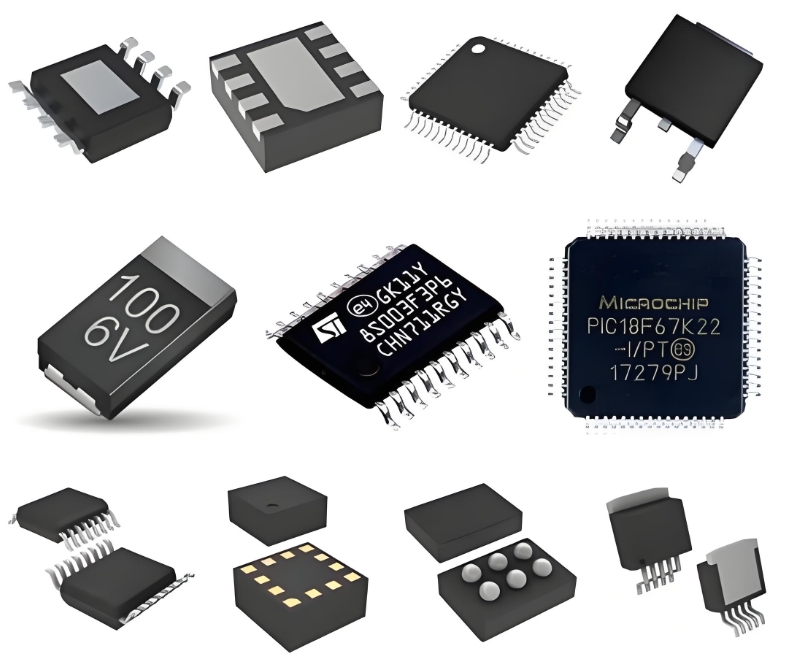**AD8403ARZ100-REEL: A Comprehensive Guide to the 256-Position Digital Potentiometer**
In the realm of modern electronics, the digital potentiometer stands as a crucial component, replacing traditional mechanical potentiometers with a solid-state, software-controlled solution. Among these, the **AD8403ARZ100-REEL** from Analog Devices is a highly integrated and versatile quad-channel, 256-position device that offers exceptional performance and control for a wide array of applications.
**Understanding the Core Functionality**
At its heart, the AD8403ARZ100 is a **digitally controlled variable resistor (RDAC)**. Each of its four independent channels contains a fixed resistor with a wiper contact that is controlled via a serial peripheral interface (SPI). The “100” in its part number signifies a **end-to-end resistance of 100 kΩ** per channel. The wiper’s position can be set to any of 256 discrete values, providing a fine resolution of (100 kΩ/255) ≈ 392 Ω per step. This allows for precise adjustment of resistance, voltage division, and current flow without any moving parts, eliminating the mechanical wear and noise associated with traditional pots.
**Key Features and Specifications**
The AD8403ARZ100-REEL is distinguished by several robust features:
* **256-Position Resolution:** Offers **high-precision adjustment** for sensitive analog circuits.
* **Quad-Channel Architecture:** Integrates four potentiometers in a single 24-lead SOIC package, saving board space and simplifying design.
* **SPI-Compatible Serial Interface:** Enables simple daisy-chaining of multiple devices and easy communication with microcontrollers and digital processors.
* **Wide Operating Voltage Range:** Can function with a supply voltage from **+2.7 V to +5.5 V**, making it suitable for both 3.3V and 5V systems.
* **Low Power Consumption:** Features a low standby current, which is critical for battery-powered portable equipment.
* **Non-Volatile Memory (NV):** While the AD8403ARZ100 is a volatile device (wiper position resets to mid-scale on power-up), other members in the AD8400 family offer non-volatile memory, which is a critical distinction for applications requiring memory of the last setting.

**Typical Applications**
The versatility of this digital potentiometer makes it a go-to component in numerous systems:
* **Programmable Gain Amplifiers (PGAs):** Used to set amplifier gain digitally in instrumentation and audio equipment.
* **Analog Signal Conditioning and Calibration:** Precisely trimming sensor offsets or calibrating system parameters during manufacturing or in the field.
* **Volume and Tone Control:** Providing **quiet, chatter-free adjustment** in audio systems and professional mixing consoles.
* **LCD Screen Contrast and Brightness Control:** Adjusting bias voltages in display modules.
* **Industrial Process Control:** Serving as a digitally set reference point in control loops and automation systems.
**Design Considerations**
When integrating the AD8403ARZ100, engineers must consider several factors. The **wiper resistance (typically 50 Ω)** can affect performance in very low-resistance applications. The device's bandwidth, which is frequency-dependent, may limit its use in very high-speed circuits. Furthermore, understanding the difference between rheostat (two-terminal) and potentiometer (three-terminal) modes is essential for correct circuit implementation. Proper decoupling and a clean digital ground are also mandatory to ensure stable operation and prevent noise from coupling into the sensitive analog signals.
**Conclusion and Advantages**
The AD8403ARZ100-REEL provides a reliable, compact, and highly programmable solution for resistance-based tuning and control. Its **high integration, SPI interface, and excellent performance** make it superior to mechanical alternatives in virtually every aspect except for extreme power handling. It enables new levels of automation, remote control, and design miniaturization that are simply not possible with traditional components.
**ICGOODFIND:** The AD8403ARZ100-REEL is a quintessential component for modern electronic design, offering **unmatched digital precision and integration** for analog signal processing and system calibration.
**Keywords:** Digital Potentiometer, SPI Interface, 256-Position, Programmable Gain, Analog Devices
